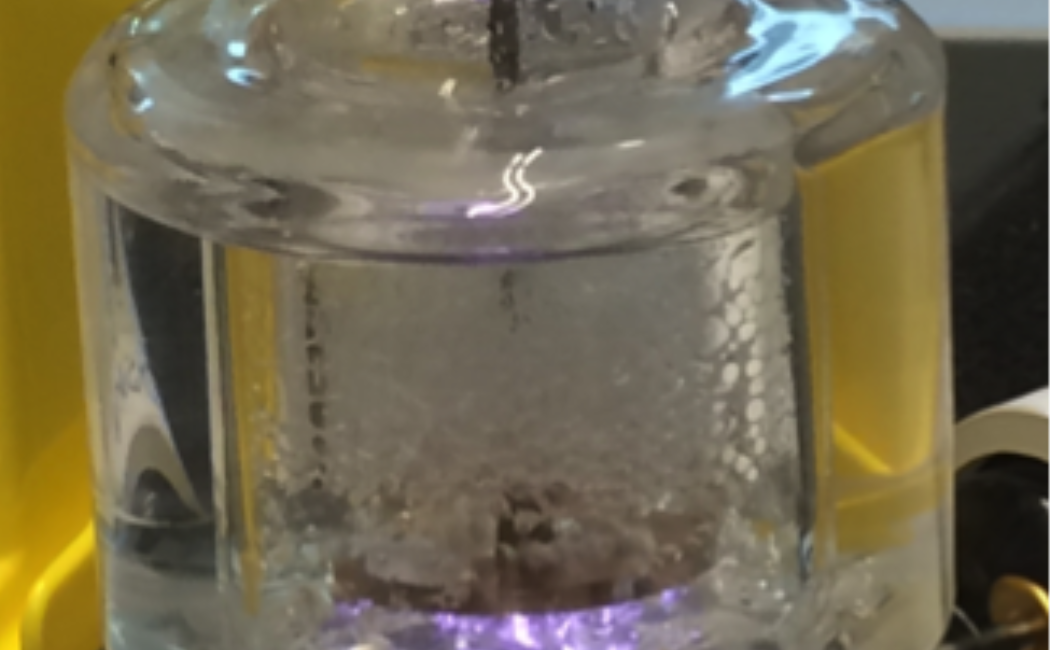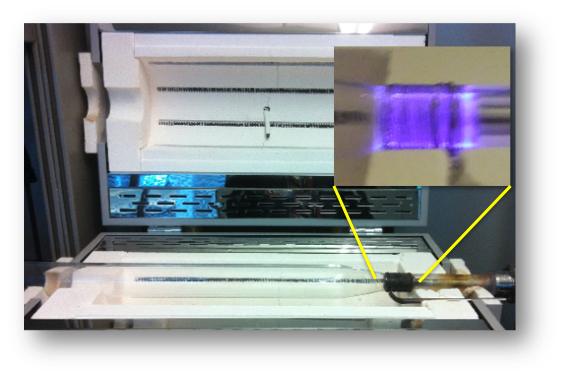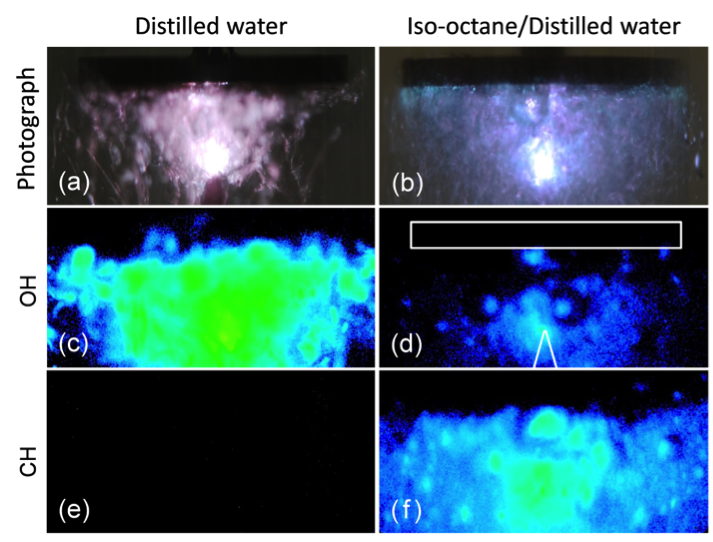


Various NTP techniques have been investigated to develop a commercially feasible process in terms of energy efficiency and product selectivity. Among available plasma-generation methods, the arc-type methods, having a localized high-temperature environment, were the most attractive both economically and technically. To optimize fuel reforming using plasma-assisted techniques, a better understanding of the thermo-chemistry and electron-induced chemistry of the process is required. An increased background temperature not only causes thermo-chemical reactions, but also influences the plasma physics, via the enhanced reduced field intensity (E/N).
With the intent to increase our understanding of the overall chemistry of the plasma-assisted fuel reforming process, we recently reported the dry reforming of methane. To this end, we employed a novel temperature-controlled dielectric barrier discharge (DBD) reactor that independently controlled the background reaction temperature and the physical characteristics of the electrons in the discharge region. As a result, we found that electron-induced chemistry dominates the conversion of methane and carbon dioxide in the tested range of temperature, while the rest of the chemical reactions were governed with the background temperature.

A temperature controlled DBD reactor
Recently, we developed an aqueous discharge reactor with a nanosecond-pulse power to facilitate electrical discharges in liquid hydrocarbons. The addition of water into iso-octane and n-dodecane increased the equivalent capacitance of the mixtures, subsequently drastically lowering the operating voltage; the mixture also created a steam-reforming environment that yielded OH radicals from the dissociation of water. By maintaining the process far from a thermal equilibrium state using non-thermal plasma, chemical intermediates that do not reach deep oxidation or cracking were obtained, preventing the formation of carbon dioxide and solid carbon. We showed plasma physical characteristics of the aqueous reactor and reported on the gaseous product (hydrogen-rich syngas) and the efficiency of the process; we probed time-resolved single discharge imaging for the in-liquid plasma; we showed a potential to tailor a liquid fuel.


Aqueous discharge in-liquid plasma reactor for Discharge characteristics in liquid with bubbles
liquid fuel reforming